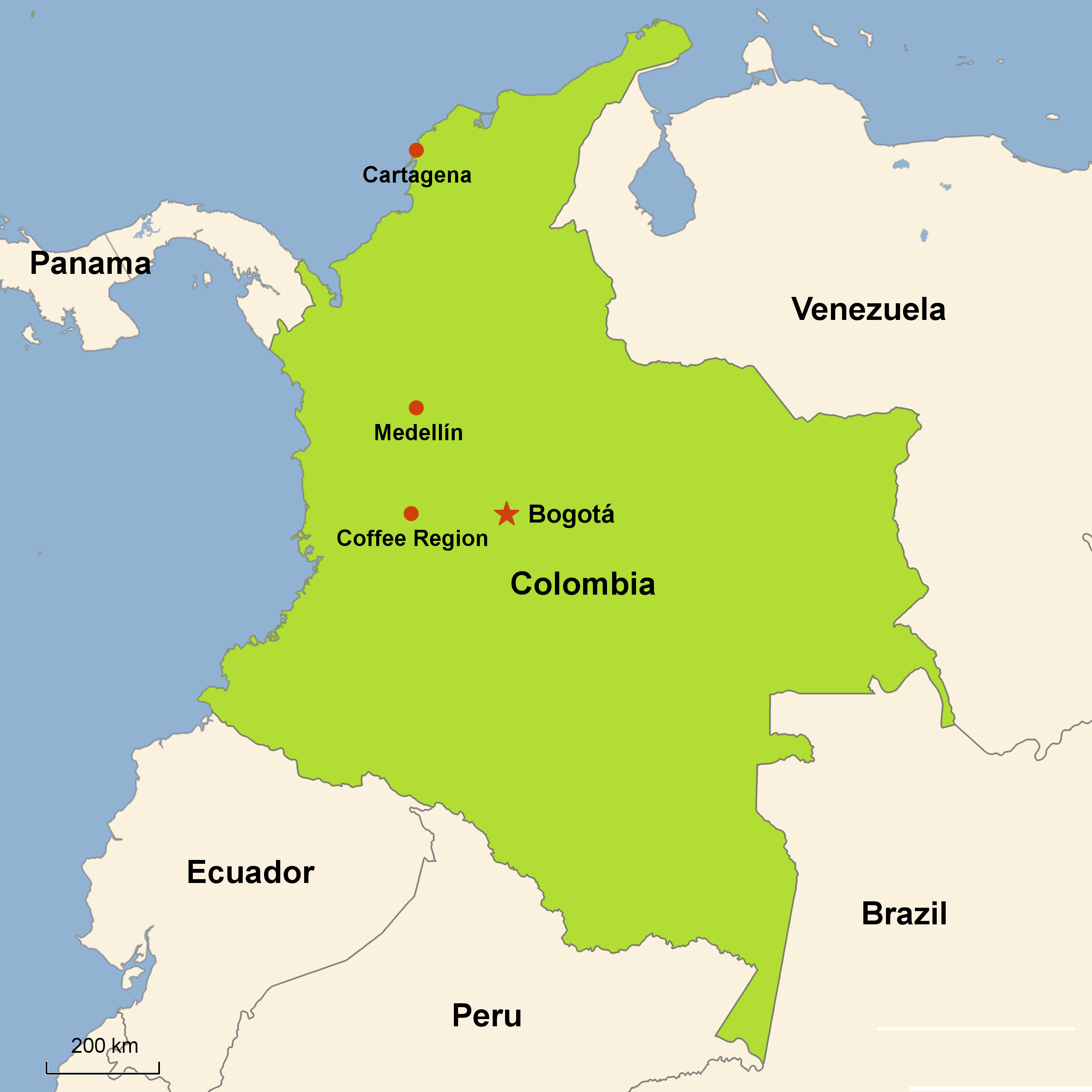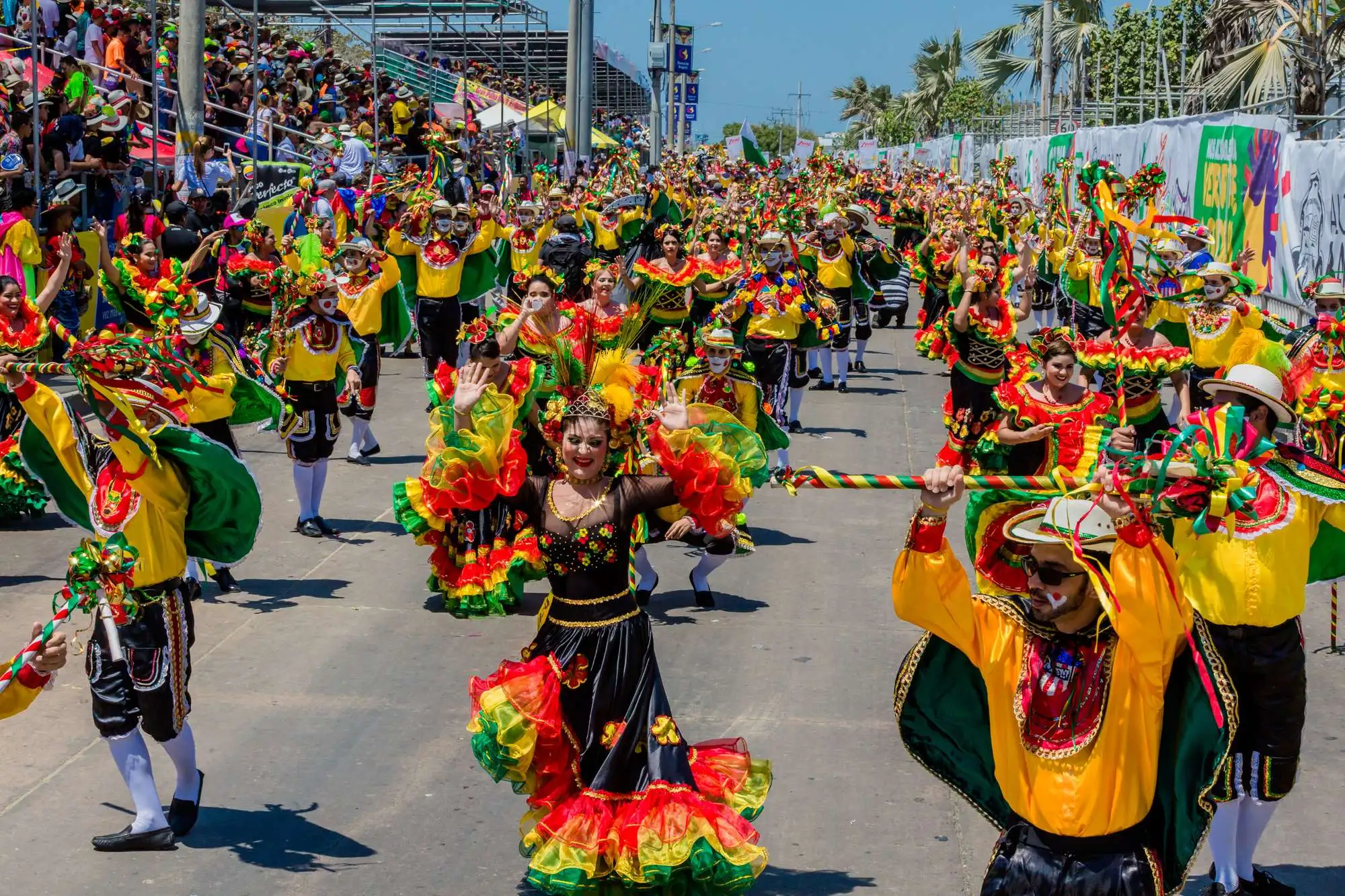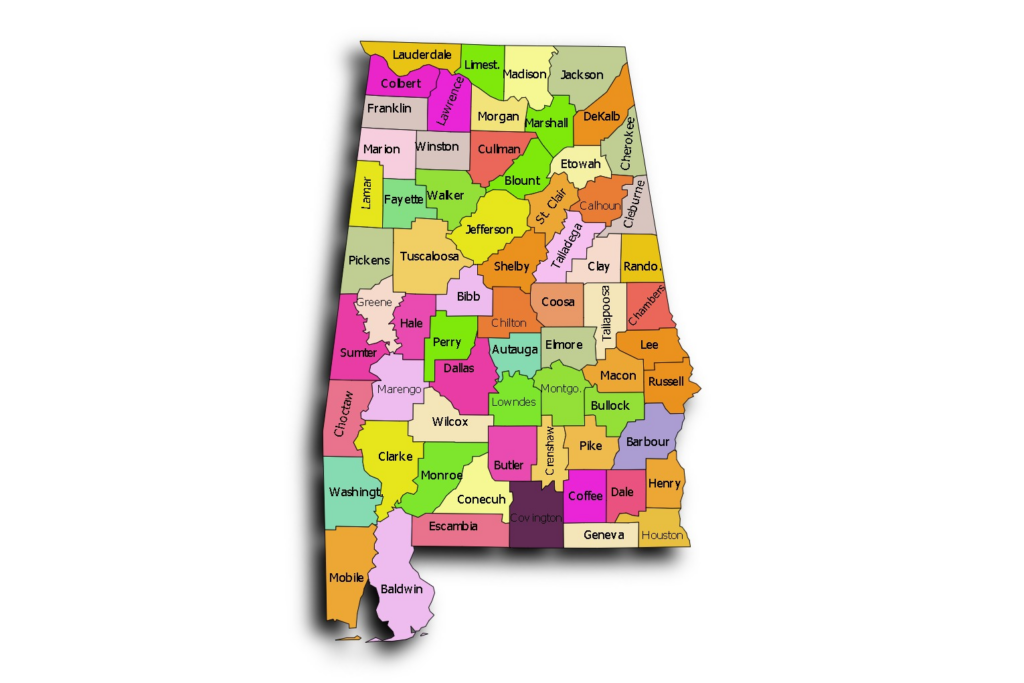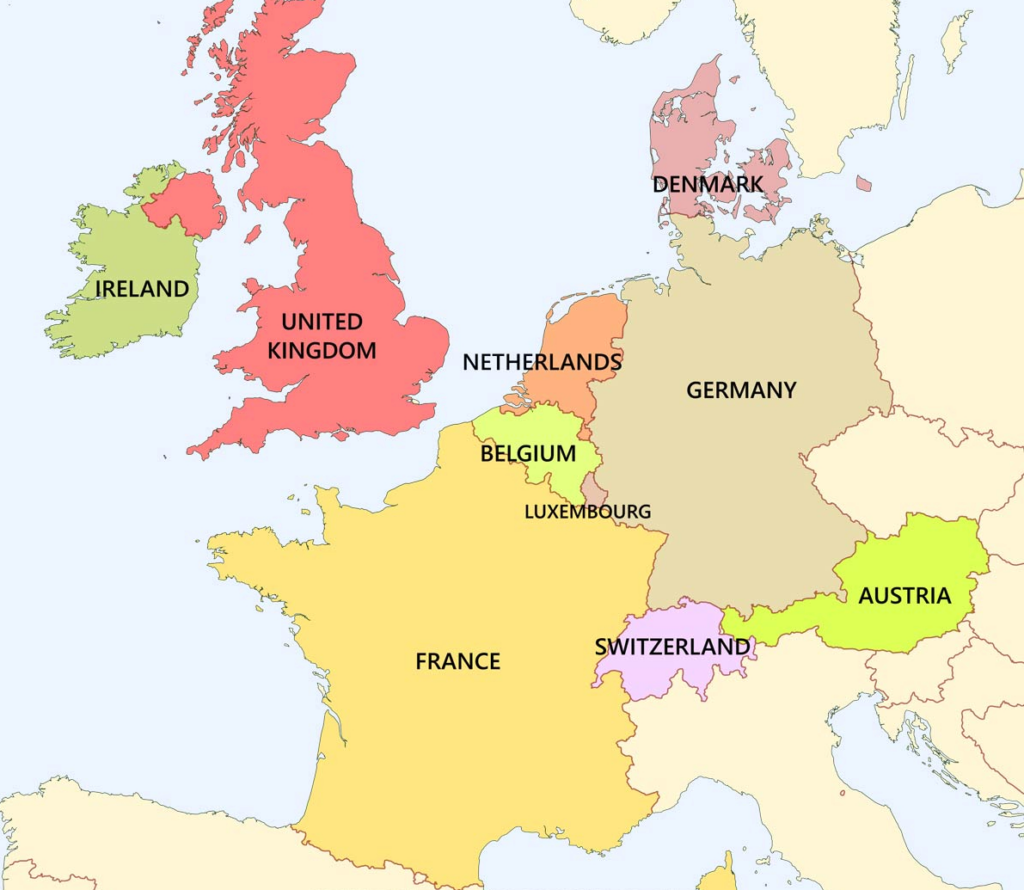Introduction
Colombia, located in the northwest corner of South America, is a country rich in cultural diversity, natural beauty, and historical significance. From the lush Amazon rainforest to the vibrant cities nestled in the Andes Mountains, Colombia offers travelers a wide array of experiences to explore. In this comprehensive guide, we will delve into the maps and facts of Colombia, providing an in-depth exploration of this captivating country.
Geography
Location
Colombia is situated in the northwest corner of South America, bordered by Panama to the northwest, Venezuela to the east, Brazil to the southeast, Peru to the south, and Ecuador to the southwest.
Its geographical coordinates range from approximately 4.5709° N latitude to 74.2973° W longitude.
Regions
Colombia is divided into six main geographic regions: the Andean Region, the Caribbean Region, the Pacific Region, the Orinoquía Region, the Amazon Region, and the Insular Region (which includes islands such as San Andrés and Providencia).
The Andean Region, characterized by its mountainous terrain and fertile valleys, is home to major cities such as Bogotá, Medellín, and Cali.
Physical Features
Colombia boasts diverse physical features, including the Andes Mountains, the Amazon rainforest, and the Caribbean and Pacific coastlines. The Andes Mountains, which run through the western part of the country, include several peaks reaching heights of over 5,000 meters (16,400 feet).
The Amazon rainforest, located in the southern part of Colombia, is one of the most biodiverse regions on the planet, teeming with a vast array of plant and animal species.
Climate
Colombia’s climate varies widely depending on altitude and proximity to the equator. Generally, the country experiences a tropical climate in the lowlands and a temperate climate in the higher elevations.
The Caribbean and Pacific coastlines have a tropical climate with high temperatures and humidity, while the Andean highlands enjoy milder temperatures year-round.
Maps
Political Map
The political map of Colombia illustrates the country’s administrative divisions, including departments, municipalities, and capital cities. Bogotá, located in the Andean Region, serves as the capital and largest city of Colombia.
Major cities such as Medellín, Cali, Barranquilla, and Cartagena are prominent landmarks on the map, each contributing to the cultural and economic diversity of the country.
Physical Map
The physical map of Colombia showcases the topographical features of the country, including mountains, rivers, and forests. The Andes Mountains dominate the western part of the country, while the Amazon Basin covers much of the southern region.
Natural landmarks such as the Sierra Nevada de Santa Marta, the Magdalena River, and the Amazon River are highlighted on the map, offering insight into Colombia’s diverse ecosystems.
Tourist Map
The tourist map of Colombia highlights popular attractions, landmarks, and points of interest for visitors. From the historic streets of Cartagena to the pristine beaches of Tayrona National Park, the map provides valuable information for travelers planning their itineraries.
Cultural destinations such as the Gold Museum in Bogotá, the Salt Cathedral in Zipaquirá, and the coffee plantations of the Coffee Cultural Landscape offer immersive experiences that showcase Colombia’s rich heritage and natural beauty.
History
Pre-Columbian Era
Colombia has a rich indigenous heritage dating back thousands of years, with indigenous tribes such as the Muisca, Tairona, and Quimbaya inhabiting the region long before the arrival of European colonizers. The Lost City (Ciudad Perdida) in the Sierra Nevada de Santa Marta is one of Colombia’s most significant archaeological sites, dating back to the pre-Columbian era.
Spanish Colonization
Colombia was colonized by the Spanish in the early 16th century, leading to the establishment of colonial cities such as Cartagena, Bogotá, and Santa Marta. The Spanish colonization had a profound impact on Colombian society, shaping its culture, language, and demographics.
Independence and Modern Era
Colombia gained independence from Spain in 1819, along with several other South American countries, under the leadership of Simón Bolívar and Francisco de Paula Santander. The period following independence was marked by political instability, civil wars, and territorial disputes.
In recent decades, Colombia has made significant strides in achieving peace and stability, although challenges such as drug trafficking, armed conflict, and social inequality persist.
Economy
Agriculture
Agriculture is a vital sector of Colombia’s economy, with products such as coffee, bananas, flowers, and emeralds contributing significantly to export revenue. Colombia is one of the world’s largest producers of coffee, renowned for its high-quality Arabica beans.
Mining
Mining plays a crucial role in Colombia’s economy, with the country being rich in natural resources such as coal, gold, and oil. The mining industry generates substantial revenue and employment opportunities, particularly in regions such as Antioquia and Boyacá.
Tourism
Tourism is a growing sector of Colombia’s economy, attracting visitors from around the world to experience its diverse landscapes, rich culture, and warm hospitality. The country offers a wide range of attractions, including colonial cities, archaeological sites, national parks, and pristine beaches.
Culture
Cultural Diversity
Colombia is renowned for its cultural diversity, with influences from indigenous, African, European, and Asian traditions. The country’s rich cultural heritage is celebrated through music, dance, festivals, cuisine, and artisanal crafts.
Music and Dance
Music and dance are integral parts of Colombian culture, with genres such as cumbia, vallenato, salsa, and reggaeton reflecting the country’s diverse cultural heritage. Traditional dances such as the cumbia, salsa, and bambuco are performed at festivals and celebrations throughout the country.
Gastronomy
Colombian cuisine is diverse and flavorful, with regional specialties ranging from hearty soups and stews to grilled meats and seafood dishes. Traditional Colombian foods such as arepas, bandeja paisa, sancocho, and empanadas delight food enthusiasts with their savory flavors and culinary creativity.
Conclusion
Colombia, with its breathtaking landscapes, rich history, and vibrant culture, offers travelers a truly immersive experience in the heart of South America. From exploring ancient ruins and colonial cities to trekking through pristine rainforests and lounging on tropical beaches, Colombia captivates visitors with its diversity and charm. By understanding the maps and facts of Colombia, travelers can embark on an unforgettable journey that celebrates the country’s natural beauty, cultural heritage, and warm hospitality.
What are 5 interesting facts about Colombia?
Colombia is the second most biodiverse country in the world, with a rich variety of plant and animal species.
The country is one of the largest producers of emeralds in the world, renowned for its high-quality gemstones.
Colombia is the world’s leading producer of fresh-cut flowers, exporting millions of flowers annually to countries around the globe.
The Andean condor, one of the largest flying birds in the world, is native to Colombia and is considered a national symbol.
Colombia is home to Ciudad Perdida (the Lost City), an ancient archaeological site believed to be older than Machu Picchu in Peru.
What part of the map is Colombia?
Colombia is located in the northwest corner of South America, bordered by Panama to the northwest, Venezuela to the east, Brazil to the southeast, Peru to the south, and Ecuador to the southwest.
What is Colombia known for geographically?
Geographically, Colombia is known for its diverse landscapes, including the Andes Mountains, the Amazon rainforest, and the Caribbean and Pacific coastlines.
How big is the Colombian geographic area?
Colombia covers an area of approximately 1,141,748 square kilometers (440,831 square miles), making it the 25th largest country in the world by land area.
What is the capital of Colombia geography?
The capital of Colombia is Bogotá, located in the Andean region of the country. Bogotá is the largest city in Colombia and serves as the political, economic, and cultural center of the nation.
What is Colombia best known for?
Colombia is best known for its vibrant culture, rich biodiversity, and coffee production. The country’s warm and welcoming people, stunning landscapes, and diverse cuisine also contribute to its popularity as a tourist destination.
What is the highest point in Colombia?
The highest point in Colombia is Pico Cristóbal Colón, which stands at an elevation of approximately 5,775 meters (18,947 feet) above sea level. It is part of the Sierra Nevada de Santa Marta mountain range.
What are Colombia’s two largest cities?
The two largest cities in Colombia are Bogotá, the capital, and Medellín, the second-largest city. Bogotá is located in the Andean region, while Medellín is situated in the Aburrá Valley of the Andes Mountains.
What is the most populous region in Colombia?
The most populous region in Colombia is the Andean region, which includes major cities such as Bogotá, Medellín, Cali, and Bucaramanga. The Andean region is known for its diverse culture, economic activity, and political significance.
What is the climate in Colombia?
Colombia’s climate varies depending on altitude and proximity to the equator. Generally, the country experiences a tropical climate in the lowlands and a temperate climate in the higher elevations. Coastal areas have warm temperatures year-round.
Does Colombia have 2 seasons?
Colombia typically experiences two main seasons: a wet season (rainy season) and a dry season (dry season). However, due to its proximity to the equator and diverse geography, weather patterns can vary significantly throughout the country.
- Hungary Maps & Facts - June 24, 2024
- The Bahamas Maps & Facts - June 13, 2024
- Colombia Maps & Facts - June 12, 2024





